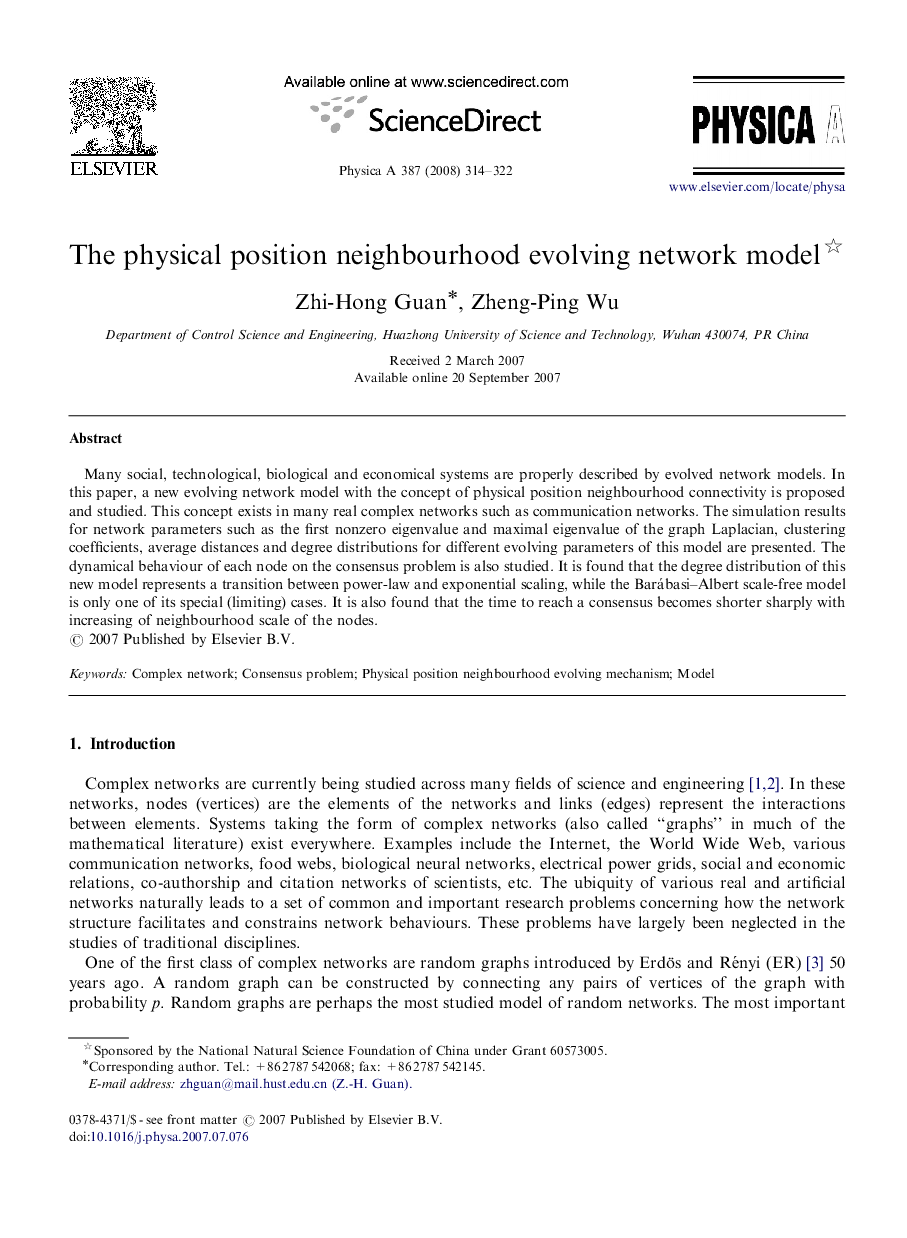| Article ID | Journal | Published Year | Pages | File Type |
|---|---|---|---|---|
| 975310 | Physica A: Statistical Mechanics and its Applications | 2008 | 9 Pages |
Many social, technological, biological and economical systems are properly described by evolved network models. In this paper, a new evolving network model with the concept of physical position neighbourhood connectivity is proposed and studied. This concept exists in many real complex networks such as communication networks. The simulation results for network parameters such as the first nonzero eigenvalue and maximal eigenvalue of the graph Laplacian, clustering coefficients, average distances and degree distributions for different evolving parameters of this model are presented. The dynamical behaviour of each node on the consensus problem is also studied. It is found that the degree distribution of this new model represents a transition between power-law and exponential scaling, while the Barábasi–Albert scale-free model is only one of its special (limiting) cases. It is also found that the time to reach a consensus becomes shorter sharply with increasing of neighbourhood scale of the nodes.
